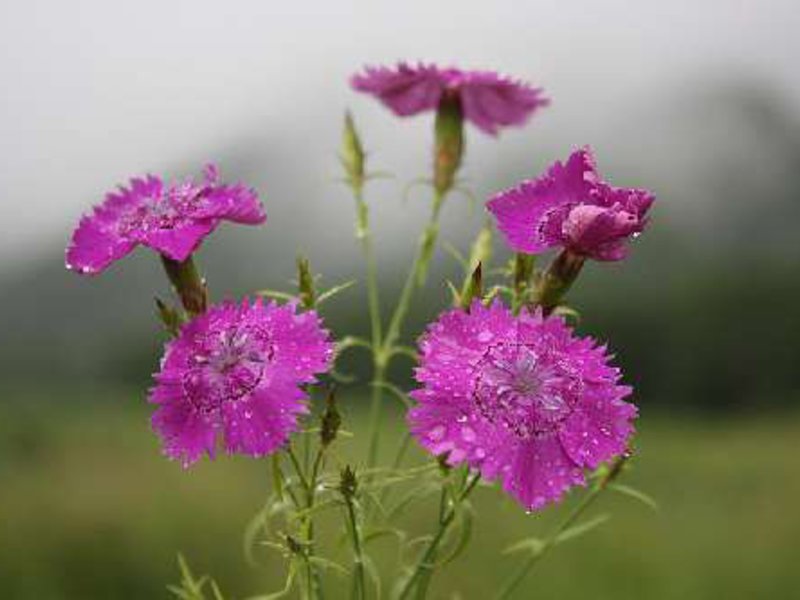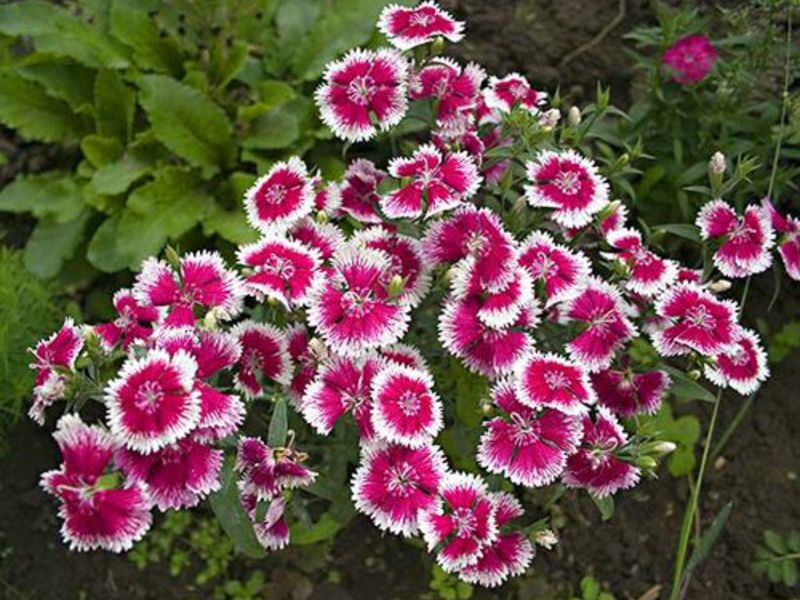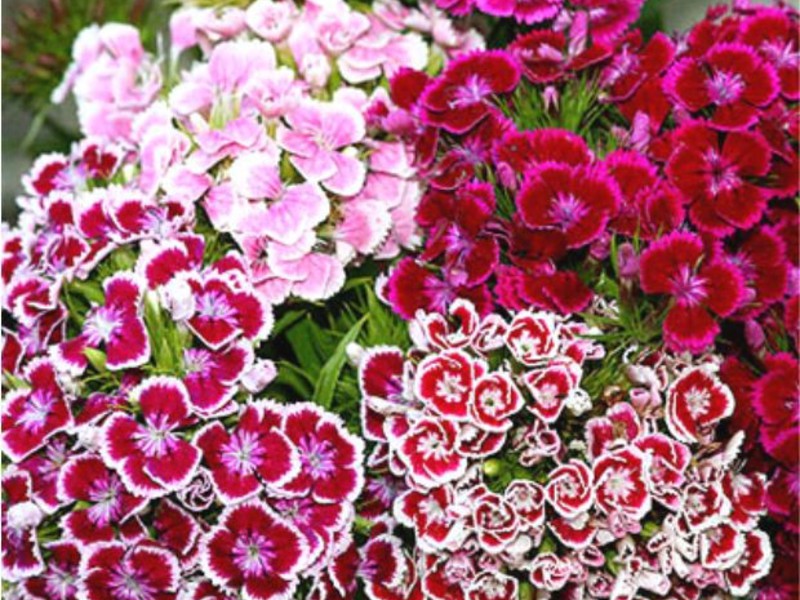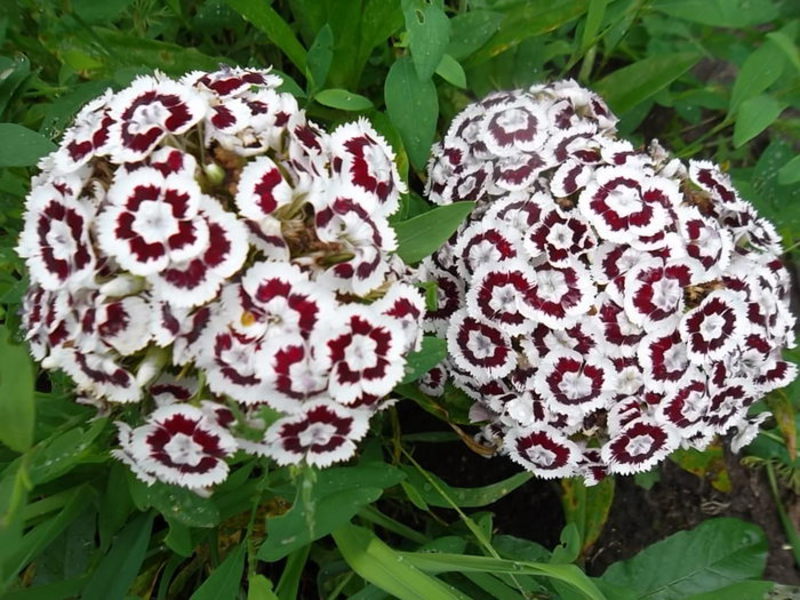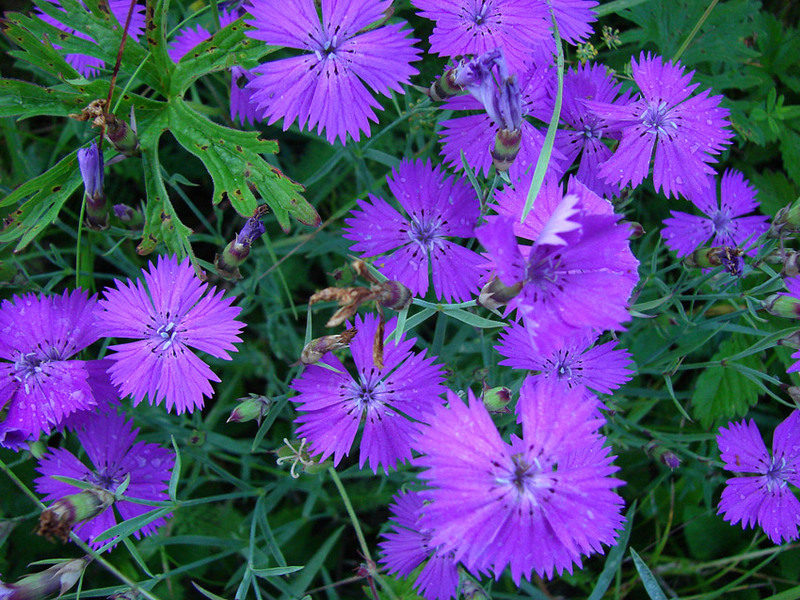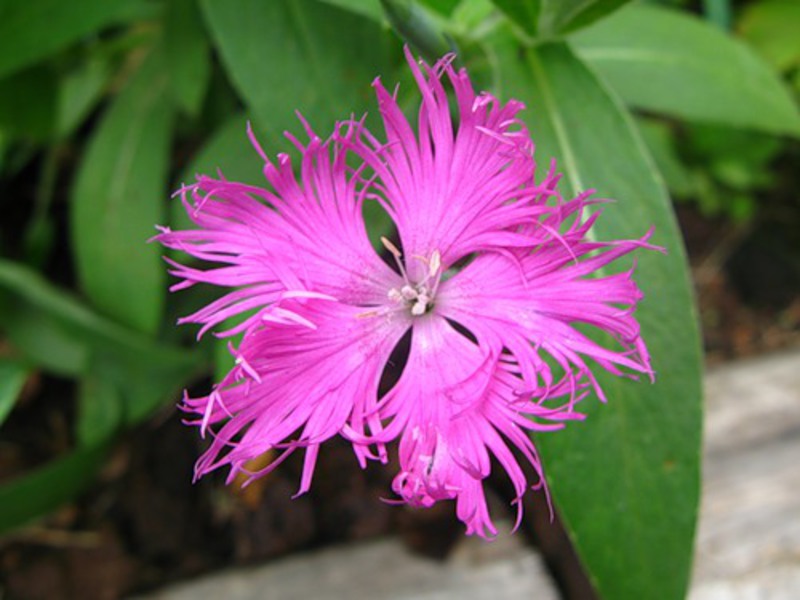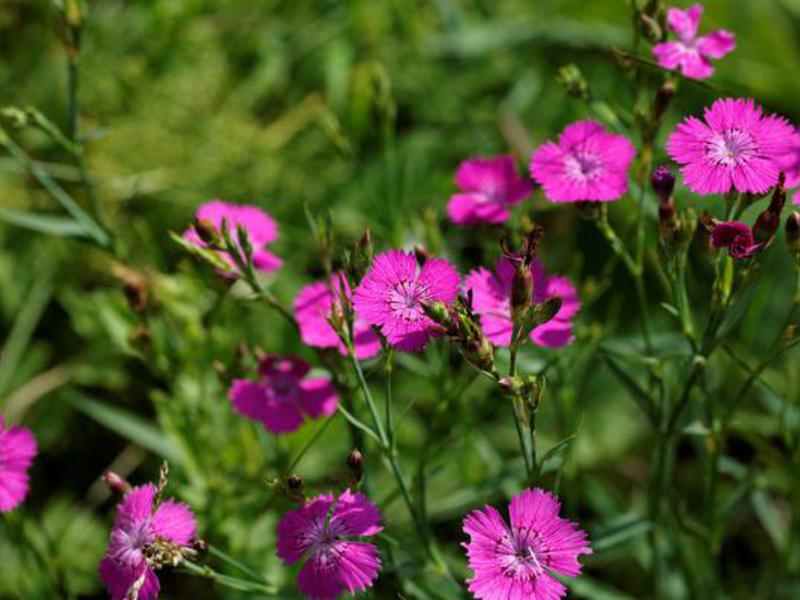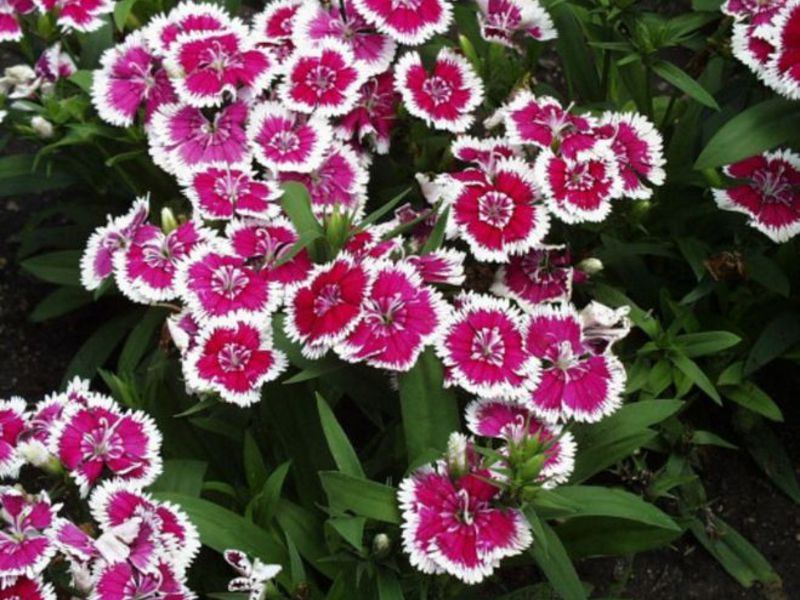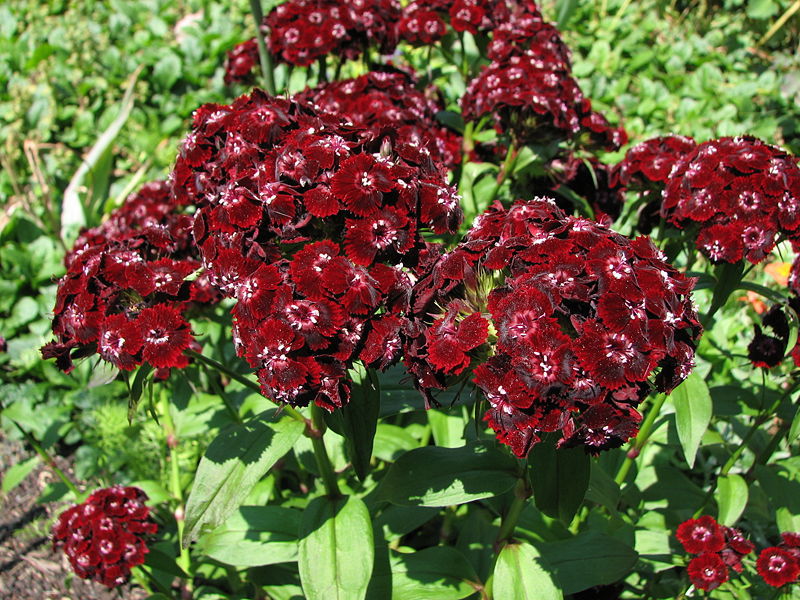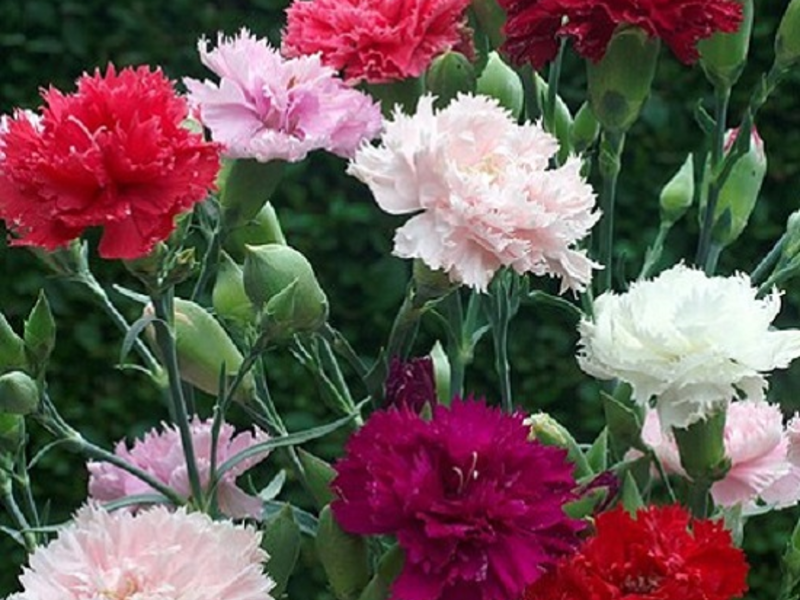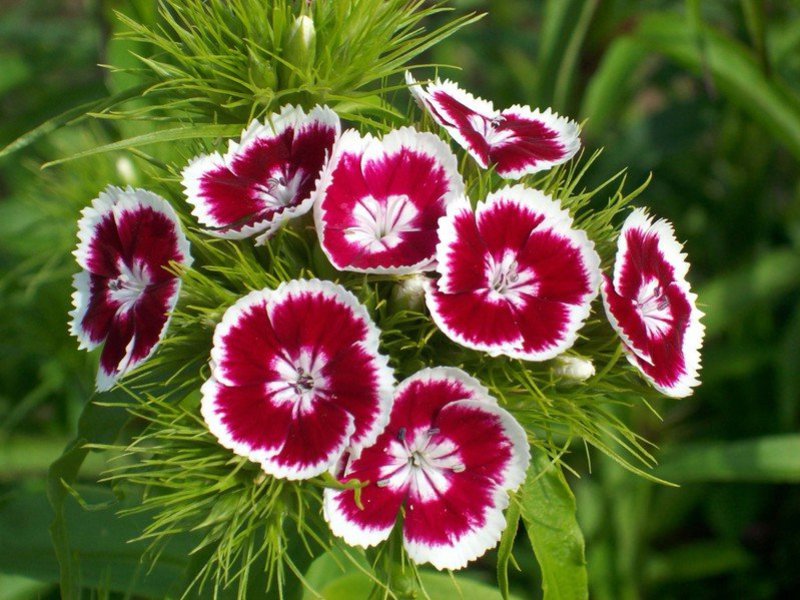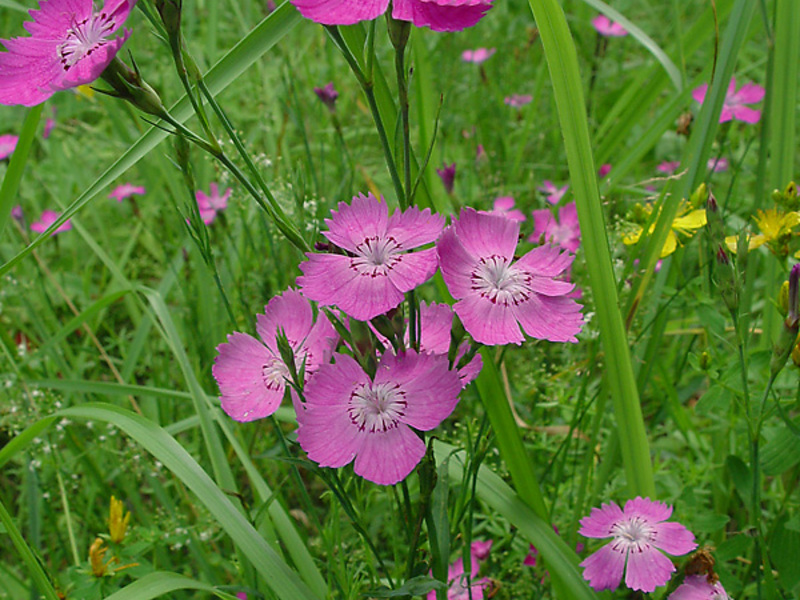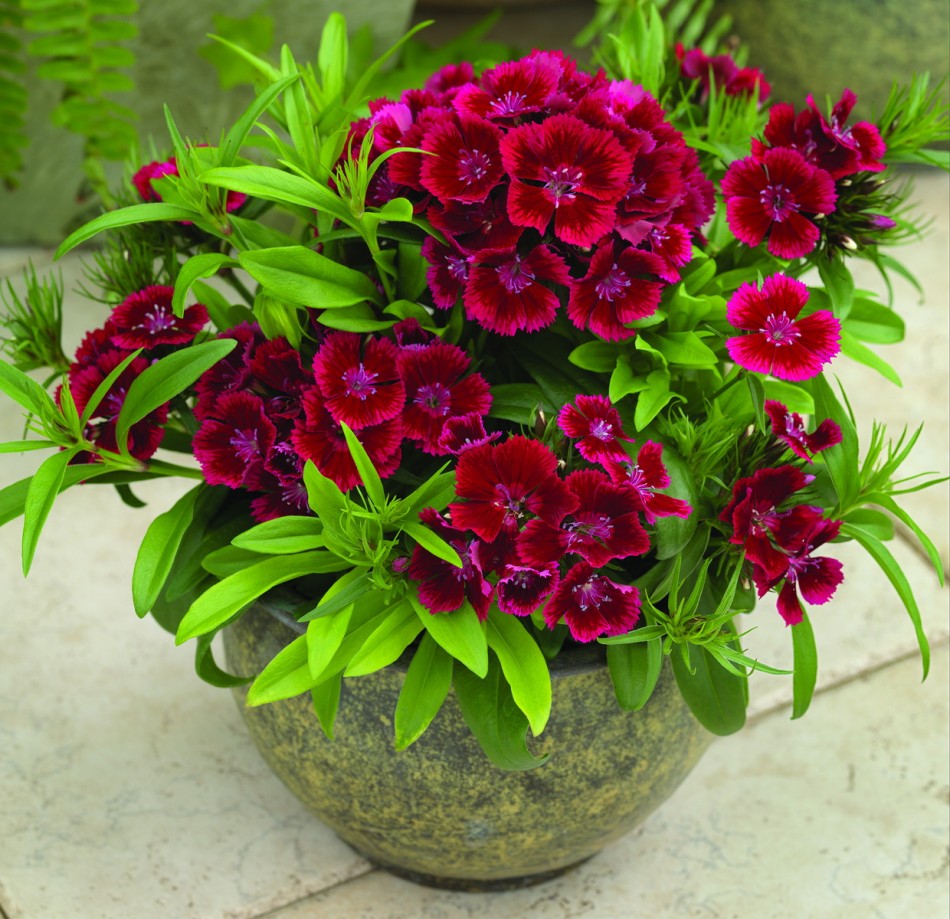A flower like carnation is very popular and widely known. It has more than 300 varieties, which differ from each other in color and other characteristics. Carnation flowers have a very delicate and pleasant smell; they can stand in a vase for a very long time.
Today we will tell you about this flower and its perennial varieties. You will also see a photo of some of the carnation samples.
Content
Key characteristics of carnations
The carnation flower got its name from the Germans, since this aroma reminded them of the spice that is obtained from the clove tree. That is why it is worth remembering that flowers called carnations have nothing to do with the seasoning that is sold in the store.
Also, carnations are called "dianthus", which is translated from Latin as "divine flower".
There is in nature about three hundred types of carnations, they are:
- annual;
- biennial;
- perennial.
If you look for photos of flowers from each of the categories, you can make sure that, despite their irresistibility, they may look significantly different from each other.
What carnations look like: photo
 In this plant, flowers can have a single arrangement, or be grouped in inflorescences in the form of panicles or scutes. The cups are cylindrical. The color range of plants is so extensive that it will be simply impossible to list all the shades.
In this plant, flowers can have a single arrangement, or be grouped in inflorescences in the form of panicles or scutes. The cups are cylindrical. The color range of plants is so extensive that it will be simply impossible to list all the shades.
Carnation petals with long nails and a velvety surface. Each flower consists of five petals, 10 stamens and one pistil with 2 columns.
Carnation leaves cereal and linearplaced in opposite order can have all possible shades of green, for example:
- herbaceous;
- dark;
- bluish.
In the photo you can see examples of what color the flowers themselves and their leaves can have.
The stems of a flower are different:
- knotty;
- smooth;
- herbaceous;
- partially lignified;
- branched;
- single.
Clove fruit is a long, single-nest box containing shiny oval or round black seeds.
Depending on the type of carnation, not only its appearance differs, but also such indicators as:
- stem length;
- flowering period;
- flowering duration and so on.
In the photo you can see samples of different types of carnations in various shades.
Distribution and use of carnations
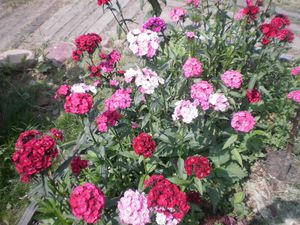 The Chinese carnation was first seen in Primorye, Japan and northern China. And the garden carnation comes from the Mediterranean. The Turkish variety originated in central Europe.
The Chinese carnation was first seen in Primorye, Japan and northern China. And the garden carnation comes from the Mediterranean. The Turkish variety originated in central Europe.
The most common flower is in Europe and Asia. Some varieties can be found in parts of North America and South Africa.
Most often these flowers are used for the following purposes:
- when decorating borders or rock gardens;
- for decorating lawns and flower beds in the form of a flowering dense carpet;
- for framing stair steps;
- in order to soften the coldness of the stone in the tiles;
- for decoration of retaining walls in order to give them texture.
Often, with the help of carnations, you can create all kinds of compositions, and some types are used for cutting. If you wish, you can search the Internet for photos of what can be done with these colors.
Perennial carnation and its varieties
One of the varieties of carnation is perennial, it has many varieties. It is also very important choose the right variety depending on your expectations and the way you care for it. Below we suggest finding out what are the features of some types of perennial carnations. You can also see some of them in the photo.
Perennial feathery carnation
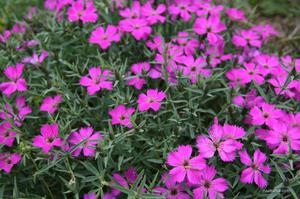 This variety of this flower is one of the most original. The edges of its petal have deep cuts, which give originality and playfulness. Also, the feathery flower is called Hungarian.
This variety of this flower is one of the most original. The edges of its petal have deep cuts, which give originality and playfulness. Also, the feathery flower is called Hungarian.
Its distinctive feature is the green-blue dense bushes that appear in the first year. They can decorate any garden or flower garden. The feathery carnation can be found naturally on the slopes of the European mountain systems.
It is better to plant a plant in bushes. Its flowers have diameter 3 centimeters, can be simple, and can be terry. They bloom from June to August. The petals are unusually fragrant and can have shades such as:
- white;
- red;
- pink;
- purple;
- burgundy.
Garden (Dutch) carnation
This perennial carnation variety is native to the Mediterranean. A garden flower is the result of crossing other species of this plant. It is characterized by continuous flowering from June, and ending with the first autumn frosts. And where winters are warm, then it stops blooming only in rainy time.
In domestic climatic conditions, the regular flowering of such a carnation can be observed at home, if you plant a flower and properly care for it. For example, you need to regularly remove shoots growing from deciduous sinuses, fertilize the flower and renew it every few years.
Shabo
This type of carnation is also the result of crossing and is named after its creator. Its flowers are very large in comparison with others and have a pleasant smell. She may have different shades:
- burgundy;
- red;
- white;
- yellow;
- pink.
And the petals can have a curved structure, or corrugated or folded.
It is these carnations that are most often used to create compositions, and it is also this type that is most often found in the markets. When cut, they can stand in water for about a week, provided that the water is changed daily.
Turkish carnation
This type of perennial carnation is distinguished by its unpretentiousness in terms of care, bright flowering and a pleasant smell. Its flowers look like inflorescences, and their diameter can reach 12 cm.Each flower may include three shades.
It is best to plant such a carnation in rows at a distance of 15 cm from each other. The holes should be dug up to 2 cm. After diving at the end of summer, small bushes are planted in a permanent place, while they should be at least 30 cm apart.
Features of growing and caring for carnations
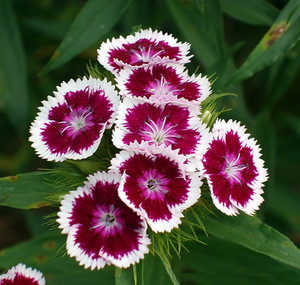 If you want carnations to decorate your flower garden or garden for as long as possible, then they should be properly looked after and not made mistakes.
If you want carnations to decorate your flower garden or garden for as long as possible, then they should be properly looked after and not made mistakes.
Plant clove seeds in early spring. Seedlings a little later, when the average daytime temperature will be about 15 degrees Celsius. If desired, small ones with roots can be separated from the main bush.
Cuttings are carried out at the very beginning of summer... This is done like this:
- cut a stalk up to 10 cm under the knot;
- make an incision below a third of the thickness of the stem;
- plant in moist soil;
- for rooting, cover with foil or jar.
For planting, it is better to choose a lighted place, however, the Turkish flower variety can grow in partial shade.Do not allow the proximity to tulips, which can infect carnations with their diseases, their treatment by means alone is not possible.
For perennial carnations, you need to choose a light and fertile soil, preferably alkaline. It is better to neutralize acidic soil with lime or ash.
Don't forget about regular flower feeding. This must be done first in the spring, then feeding is needed when the buds form and flowering begins. Do not use fresh manure and potash mixtures for fertilization. It is also not recommended to use nitrogenous fertilizers, which can provoke fungus.
Watering is carried out at the root in moderation, but often. Water should not come into contact with leaves and flowers. In general, excessive moisture is not recommended for carnations. For this, the soil is loosened. Remember to remove the damaged parts of the flower.
If you do not need seeds after flowering carnations, the heads are cut off, and the stems are lightly trimmed... It is not necessary to cover the plant for the winter with little or no snow. So that it does not die in the cold, you can dive into a pot at the beginning of autumn and move it indoors.
Potential hazards
Improper carnation care provokes the appearance of pests such as:
- aphid;
- tick and others.
Fungus is very dangerous, in order to prevent it, do not allow the soil to become waterlogged and nitrogenous fertilizers accumulate. For the purpose of prevention, the soil is constantly loosened and weeded. After a few years, it is better to transplant the carnation; next to it, the planting of tagetes or calendula is allowed.
The most dangerous diseases for cloves and their symptoms:
 Alternaria - the appearance on the stems and leaves of brown spots with a dark bloom. The flowers wither and disappear;
Alternaria - the appearance on the stems and leaves of brown spots with a dark bloom. The flowers wither and disappear;- fusarium - some parts of the plant grow too slowly, which provokes wilting and premature death;
- rust - brownish-yellow swollen spots on the leaves and stems.
With such diseases, the leaves and stems affected by them need cut and burn quickly... And the carnation itself should be sprayed with a fungicide.
As we can see in the photo, a carnation is a very beautiful flower, distinguished by a variety of shades and shapes. And if you want it to please your eye as long as possible, you need to plant and care for it correctly.
